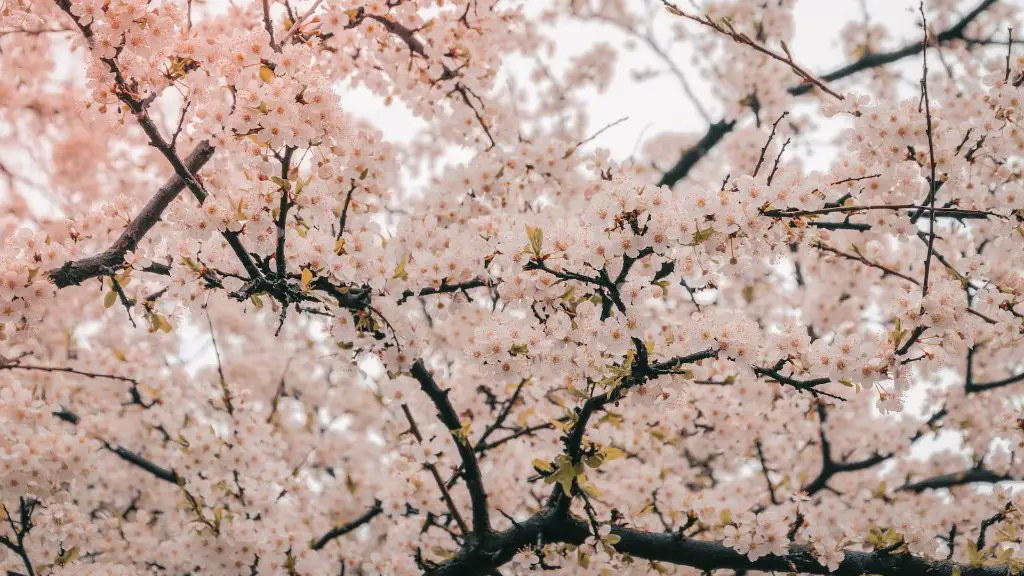Soil Quality
Weeping cherry trees, also known as Prunus subhirtella, are attractive spring blooming trees that are popular in many gardens. However, there are many reasons why these trees may not be blooming as expected. The most likely cause is poor soil quality, which can be remedied by taking simple steps can improve the health of the tree and help it to thrive and bloom.
The quality of the soil can have a major impact on how plants grow and how healthy they are. If the soil is deficient in nutrients, then it will not be able to support healthy growth. Weeping cherry trees need soil that is rich in organic matter, with a pH level of 6.5 to 7.5. To check the condition of the soil, it is best to take a soil sample and have it tested. This will give you a better idea of what nutrients are lacking and what needs to be done to improve the soil quality.
Adding organic matter to the soil is one of the best ways to improve the health of the tree. Manure, compost, and mulch can all be used to provide the necessary nutrients and organic matter that the tree needs to thrive. However, it is important to ensure that the soil is not too wet, as this can encourage fungal diseases. It is also important to ensure that there is adequate drainage, as this will help to keep the roots of the tree healthy and well-aerated.
Another cause of poor soil quality can be overwatering or underwatering. Too much water can cause the roots to be over-saturated, leading to root rot. Conversely, too little water can cause the tree to be stressed and unable to take up the needed nutrients from the soil. The best way to avoid these problems is to check the soil moisture regularly and water the tree when necessary.
Finally, poor soil quality can be caused by excessive pruning. Over-pruning can reduce the tree’s ability to produce flowers, as the tree may be deprived of energy to produce new buds. It is important to prune only when necessary, as frequent pruning can lead to stress and reduce the tree’s ability to flower.
Weather Conditions
Weather conditions can also affect the health of the weeping cherry tree and its ability to produce flowers. Too much rain can lead to poor soil quality, and an overly hot or cold climate can damage the tree’s buds. Additionally, extreme temperatures can damage the flowers or cause them to fall off prematurely.
To avoid this, it is best to choose a sheltered location in the garden that is not too close to walls or other buildings which can cause the temperature to fluctuate. Additionally, it is best to protect the tree from strong winds. Wind can dry out the soil and damage the flowers.
If the climate is particularly cold, it is best to keep the tree sheltered during the winter months. This can be done by covering the tree with a blanket of mulch or using a frost-protection cloth. Additionally, it is important to avoid pruning the tree during the winter, as this can make the tree more vulnerable to cold temperatures.
Insect and Pest Control
Incorrect insect and pest control can also prevent the weeping cherry tree from blooming. If the tree is infested with pests, then they can damage the tree and reduce its ability to flower. Additionally, incorrect use of chemicals can damage the buds and cause them to fall off prematurely.
To avoid this, it is best to inspect the tree regularly for signs of pests or disease and take appropriate action as needed. Additionally, it is important to use insect and pest control chemicals only when necessary and to follow the directions when applying them to the tree.
Root Damage
Root damage is another possible reason why the weeping cherry tree is not blooming as expected. Poor soil quality, incorrect pruning, or excessive watering can all lead to root damage, which can limit the tree’s ability to access the nutrients it needs.
To prevent root damage, it is important to ensure that the soil is of good quality, with a pH level of 6.5 to 7.5. Additionally, it is important to water the tree only when necessary and to avoid over-pruning. If root damage is suspected, then it is best to take a soil sample and have it tested to determine the cause and take steps to address it.
Plant Disease
It is also possible that the weeping cherry tree is suffering from a plant disease which is preventing it from blooming. Fungal diseases such as root rot, powdery mildew, and botrytis can all affect the health of the tree and its ability to produce flowers.
To prevent fungal diseases, it is important to ensure that the soil is not too wet and that there is adequate drainage. Additionally, it is important to inspect the tree regularly for any signs of disease and to take timely action if any are found.
Tree Age
Finally, the age of the tree can be an issue. Weeping cherry trees typically take three to five years to reach maturity, at which time they will begin to produce flowers. If the tree is younger than this, then it may not be mature enough to bloom yet.
Conclusion
In conclusion, there are many possible reasons why the weeping cherry tree is not blooming as expected. Poor soil quality, incorrect pruning, weather conditions, incorrect insect and pest control, root damage, plant disease, and the age of the tree can all affect the health of the tree and its ability to bloom. To ensure that the tree blooms as expected, it is important to take steps to address these issues.

